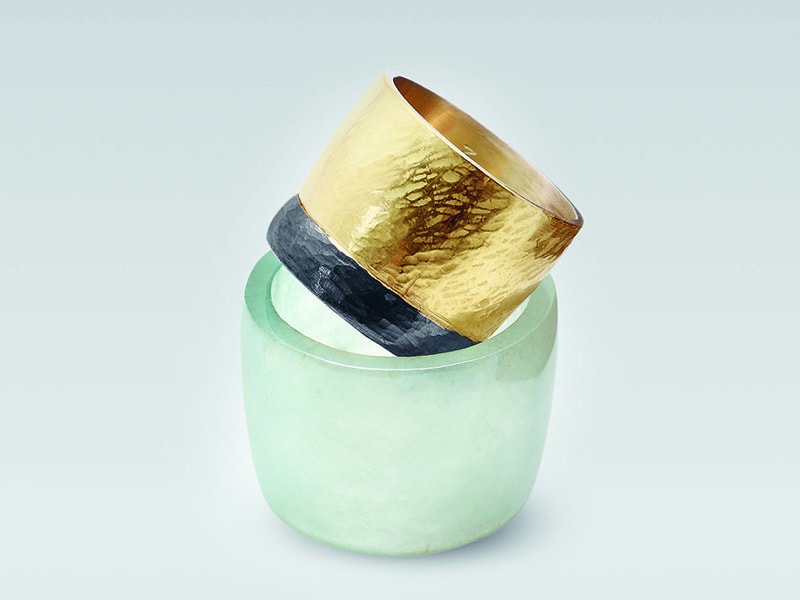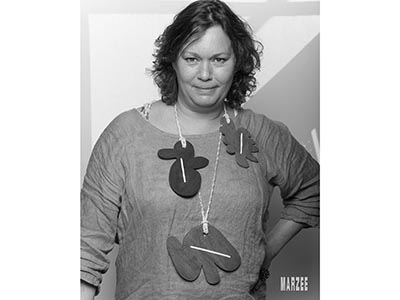Elizabeth Fischer, Ward Schrijver, Philippe Solms, and Fabienne X. Sturm, Esther Brinkmann. Stuttgart: Arnoldsche Art Publishers, 2022.
- The essays, in English, have French translations at the end of the book
- Rings are key in Brinkmann’s oeuvre, so they have a separate chapter. They’re printed so large they resemble bowls, pots, or vases. In fact, Brinkmann refers to her rings as vessels for a finger
- The jewels are centered around themes—such as enamel, stones, urushi lacquer, wire, iron—or shape
- Brinkmann’s jewelry may seem eclectic, but it forms a consistent whole. That concept is beautifully captured in this publication
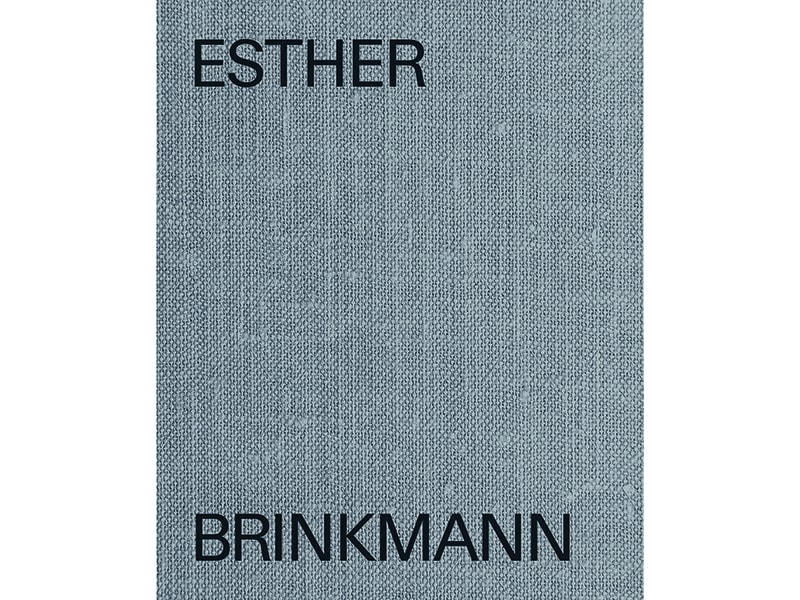 At first sight
At first sight
The hard cover of Esther Brinkmann’s monograph has the texture of coarsely woven textile in anthracite gray. On it, in plain black capitals, the name of the artist. That’s it: nothing else. It radiates minimalism and monumentality. The endpapers are dark gray as well.
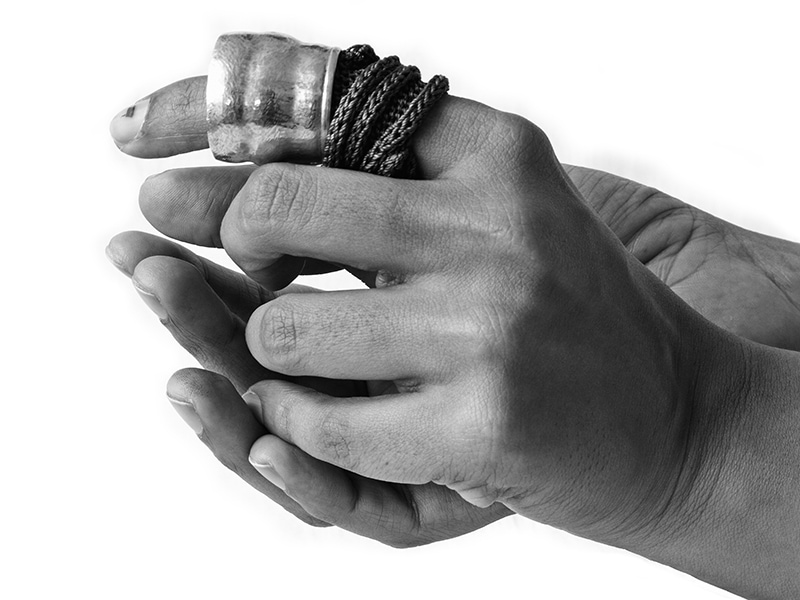
Inside the book, in a much smaller format, four folded leaves of paper—like inserted sheets of errata—with HANDS / MAINS on the cover. On the inside of these sheets, on spreads in black and white, photographs of a pair of hands wearing ring(s). Text on the back talks about wearing the rings. Why this addition? Was something forgotten or missing after printing? Like most books by Arnoldsche Art Publishers, this publication also looks perfectly well styled and designed. But what’s the point of such a tiny rag in the book? Will the purpose of the thin, almost transparent, paper sheets become clear while studying the publication?

The essays, in English, are written by Elizabeth Fischer, Ward Schrijver, Philippe Solms, and Fabienne Xavière Sturm. The page layout is calm and robust. The bold sans-serif font is pleasant to read. The interior of the book is made of matte white paper. The graphic design was done by Automatico Studio. Together with the photographers they did a good job.
Maker, teacher, and ambassador
The first text, by Fischer, is preceded by an image of a still life in Brinkmann’s studio. Such impressions appear regularly in the book. The still lives in the studio overflow with tools and tiny objects. The studio looks like a well-organized hoard.
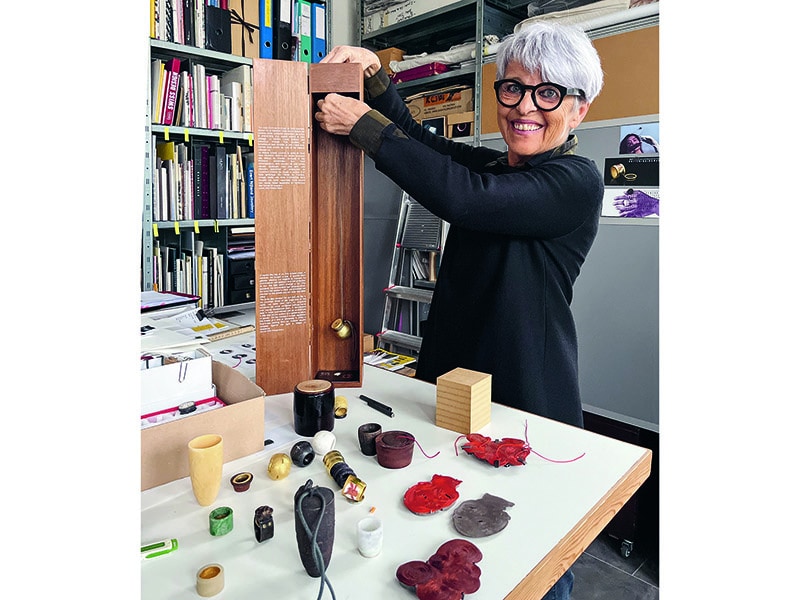
Fischer identifies three of Brinkmann’s core activities. In the first place, Brinkmann likes to share her thoughts. She loves to discuss jewelry, and in this way she shows herself to be an ambassador: she has conversations with colleagues, students, collectors, and gallery owners. Second, as a teacher, Brinkmann mainly wants her students to unlearn things. She wants them to learn to feel and look at the materials. And Brinkmann wants to teach people to tame (unusual) materials and then master them in order to ultimately materialize their ideas. Third, but certainly not least, Brinkmann is active as a jewelry designer. And this beautiful book is about that part of her life.
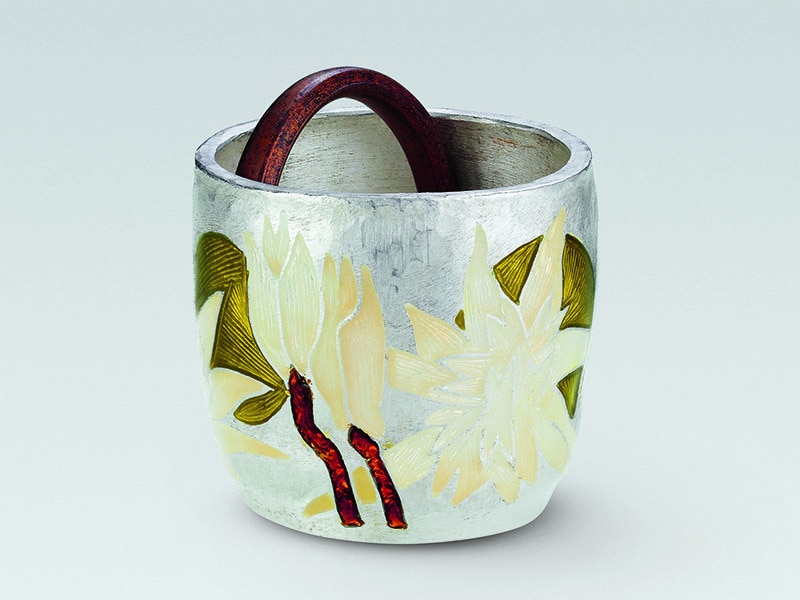
Ø 1 x 1 inch (ø 26 x 24 mm), private collection, Switzerland, photo courtesy of Arnoldsche Art Publishers
Personal portrait
Ward Schrijver paints a personal portrait of Brinkmann. He visited her at her home in Biel/Bienne, Switzerland, in her apartment, where she lives with her husband, a former diplomat, with whom she traveled the world. Before they settled in Biel/Bienne they spent almost a decade together in China and India. The house, like the workshop, is located in a former watch factory. On the basis of various man-made objects located in the living room, Schrijver describes the friendly connecting person that Brinkmann is. The vases, the teapots, the books, the sculptures, and the textile objects bear witness to the life and work of both the artist and her partner. Life and work are inextricably linked. Schrijver places Brinkmann’s oeuvre in a European historical context and finally he elaborates on Brinkmann’s position in the Swiss tradition.
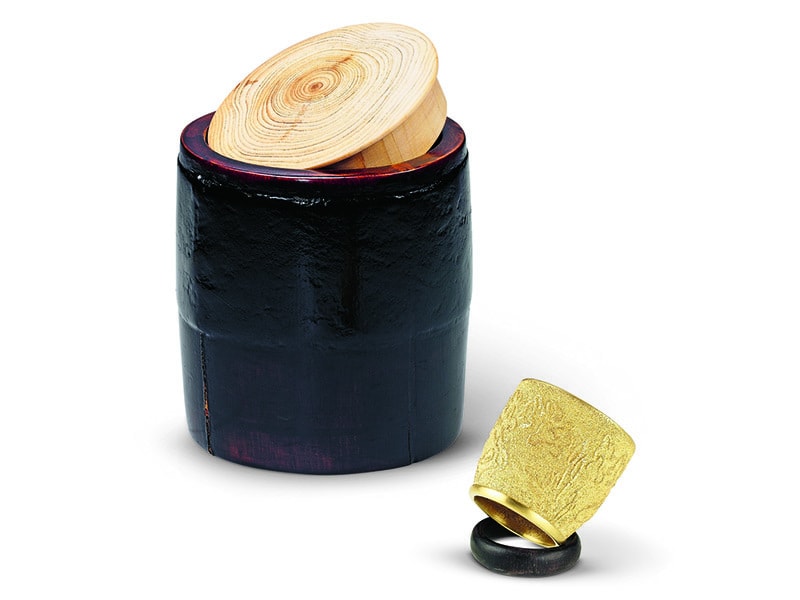
Rituals and actions
In collaboration with Brinkmann, Philippe Solms made videos of hands putting on and taking off a ring. These videos were shown at a few of her solo exhibitions.
Brinkmann has been designing and manufacturing the packaging of her jewelry for decades. The case functions as an independent object or pedestal for the jewelry as well. Solms’s conversation with Brinkmann is about the total concept of her jewelry: the jewel in its case, aside from the connection between jewel and wearer. Brinkmann considers the box for a piece of jewelry, and its opening, as a ritual that deserves attention. How is the piece of jewelry taken out, put on, and then put back into its case again?
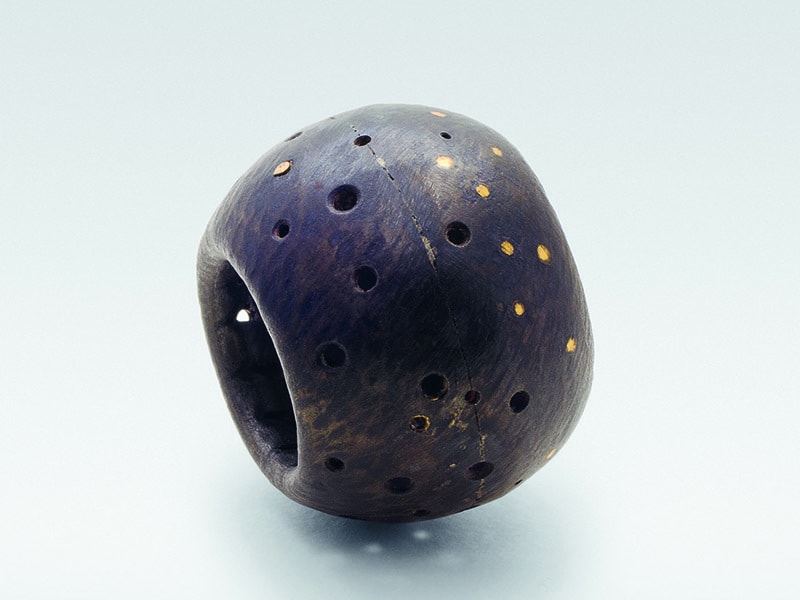
Rings
The ring is key in Brinkmann’s oeuvre and it has a separate chapter in the catalog, just like necklaces and pendants have their own chapter, as well as her brooches and packaging. Schrijver reported that, as of the book’s publication in 2022, Brinkmann has manufactured up to 240 rings. Some rings are designed in such a way that they remain upright as an independent object: they can stand on their bands. In the case of the Double Rings, the small simple ring functions as a pedestal for the large ring.
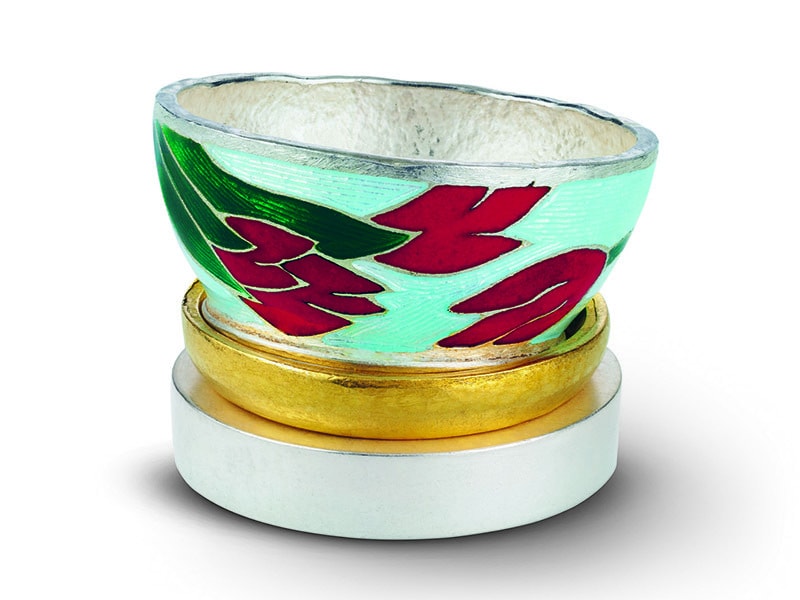
Ø 11 x ¾ inches (ø 280 x 20 mm), photo courtesy of Arnoldsche Art Publishers
The rings in the catalog are printed so enormously enlarged that they resemble vessels—bowls, pots, or vases. That is precisely what characterizes Brinkmann’s work: she refers to her rings as vessels for a finger.
The jewelry in the catalog is not presented in chronological order. The jewels are centered around themes such as enamel, stones, urushi lacquer, wire, iron, or shape, such as the Infini series—rings in figure-eight shapes—or Double Rings, rings consisting of two rings, the smaller one keeping the larger one in place during wear.
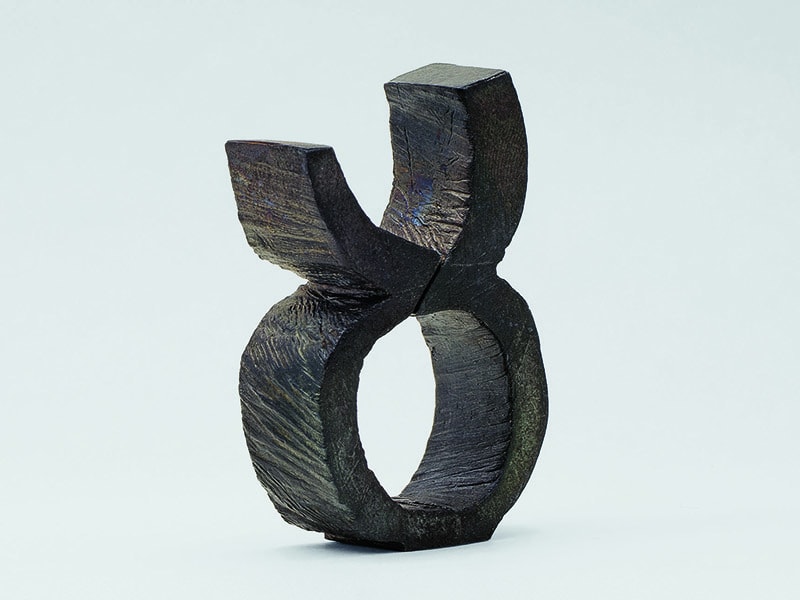
The oldest jewelry depicted in the publication are multiples: rings of anodized aluminum, dating back to 1989. Rings occupy the first and largest part of the catalog. They definitely deserve the main stage in Brinkmann’s oeuvre. Details such as a rusty texture, casting seams, and hallmarks are clearly visible. The vast printed scale of the depicted jewels gives them a tranquil and monumental appearance. At the bottom of the page, underneath the images, appears the title of the object, accompanied by the sizes, materials, and the collection of which the ring is part. Inventory numbers of museums are included. Wow! I love that keen eye for detail and knowledge. One small downside is that on a few spreads the photo crosses the gutter and the central one of three or five rings disappears in the binding of the book.
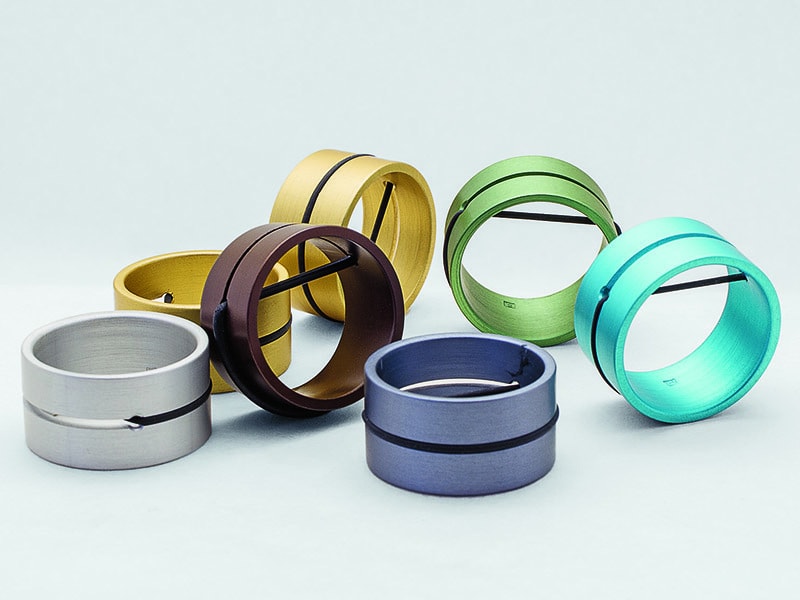
Consistent and eclectic
After almost 100 pages with rings, a dozen pages of pendants and necklaces follow. After that, almost 20 pages with dozens of brooches. Finally, another 20 pages of pictures of jewelry with their specially crafted cases. This section mainly concerns packaging for rings and pendants.
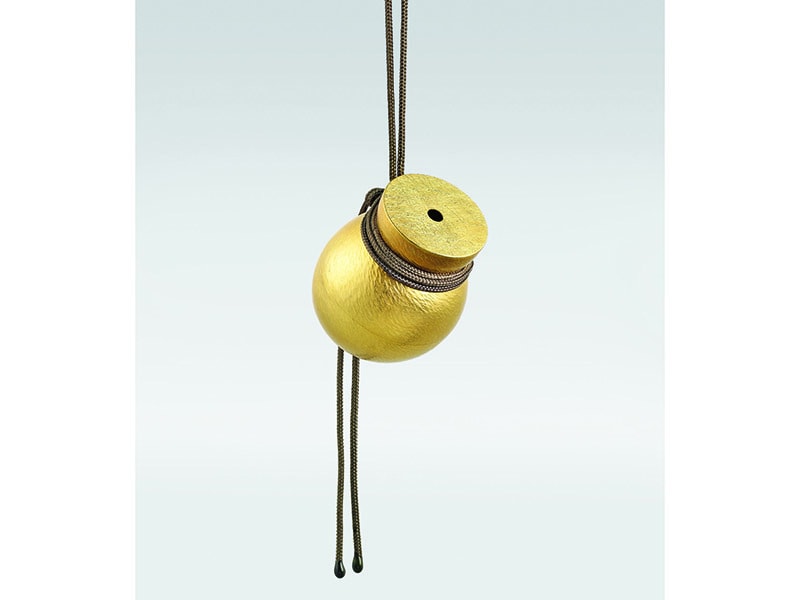
Packages for brooches are not included. After this catalog, a few pages with images of exhibitions of Brinkmann’s work at various locations. Some stills from the video installation by Solms, The Present Is the Only Thing without an End, follow that. The images of the hands in the previously mentioned inserted folded leaves would have fitted perfectly there. Finally, in a smaller font, French translations of the essays.

The book concludes with a curriculum vitae. Brinkmann’s jewelry may look eclectic at first glance. Yet it forms a surprisingly consistent whole. That concept is beautifully captured in this publication. Only that rag of tiny papers was unnecessary.
